May 1, 2018
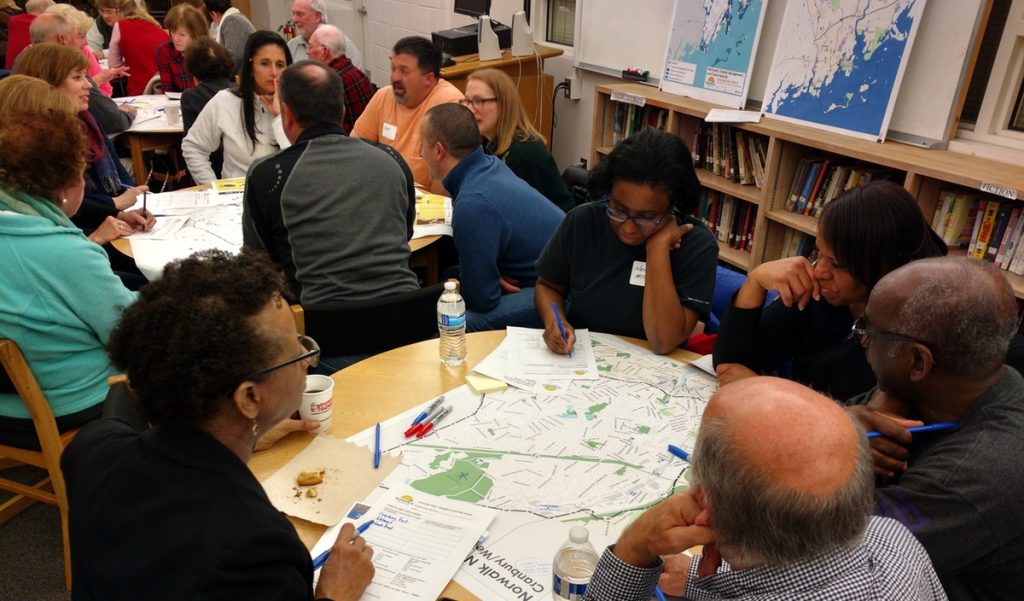 In between March’s nor’easters and threats of nor’easters, the city held nine neighborhood meetings to talk with residents about where they live and how these places fit into the citywide plan/POCD. Building on the citywide visioning workshop in November, the purpose of these meetings was to learn more about each neighborhood, identifying ideas and concerns in each area as well as shared themes across neighborhoods. This information will be used to help develop draft strategies for the citywide plan to be discussed in four topic-based workshops later this spring.
In between March’s nor’easters and threats of nor’easters, the city held nine neighborhood meetings to talk with residents about where they live and how these places fit into the citywide plan/POCD. Building on the citywide visioning workshop in November, the purpose of these meetings was to learn more about each neighborhood, identifying ideas and concerns in each area as well as shared themes across neighborhoods. This information will be used to help develop draft strategies for the citywide plan to be discussed in four topic-based workshops later this spring.
Talking with more than 300 Norwalkers
These meetings attracted a range of people, from long-time neighborhood proponents to first-time participants in a city planning process. Younger residents came eager to talk with neighbors about their ideas and concerns. At one meeting, a Cub Scout and his parent came to pursue a civic participation badge and learn about the citywide plan. Participants heard about the meetings through the Hour, the city website, emails from neighborhood associations and other civic groups, Facebook, or friends and neighbors.
Despite an expansive outreach effort, and perhaps partly due to rescheduling issues due to weather, some groups remained hard to reach: the Hispanic community (especially in South Norwalk), neighborhoods like Brookside and Hospital Hill that lack active associations or identified leaders, and younger residents. The City and the consultant team are continuing to explore effective ways to engage these groups in the planning process. There will be a meeting on May 1 geared specifically for teenagers. We’ll ask them to discuss what they would like to see in Norwalk for youth and think about what would make them stay in Norwalk as young working adults.
Unique neighborhood assets, issues, and ideas
Residents in each neighborhood have specific ideas and concerns based on the natural setting, recent development activity, or location within the city. The following are taken from neighborhood asset and challenge worksheets that meeting participants completed individually as well as table consensus forms that small groups developed together:
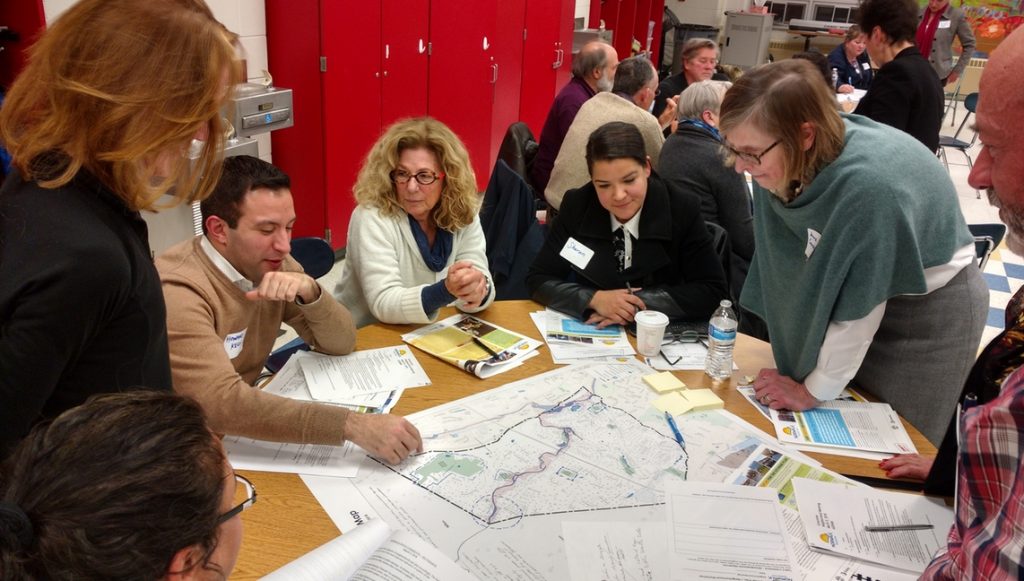 Silvermine: The Silvermine River, other natural and historic resources, and the arts community are some of the identifying features of the neighborhood for many participants. Concerns include pollution and debris in local waterways, cut-through traffic from other areas, and pedestrian safety due to speeding cars and lack of sidewalks.
Silvermine: The Silvermine River, other natural and historic resources, and the arts community are some of the identifying features of the neighborhood for many participants. Concerns include pollution and debris in local waterways, cut-through traffic from other areas, and pedestrian safety due to speeding cars and lack of sidewalks.- Rowayton: Pinkney Park, the active waterfront and downtown area on Rowayton Avenue, and walkability in the neighborhood are among participants’ favorite assets. Zoning issues, especially about density, are one item people would like to see change, along with more sidewalks and better parking solutions.
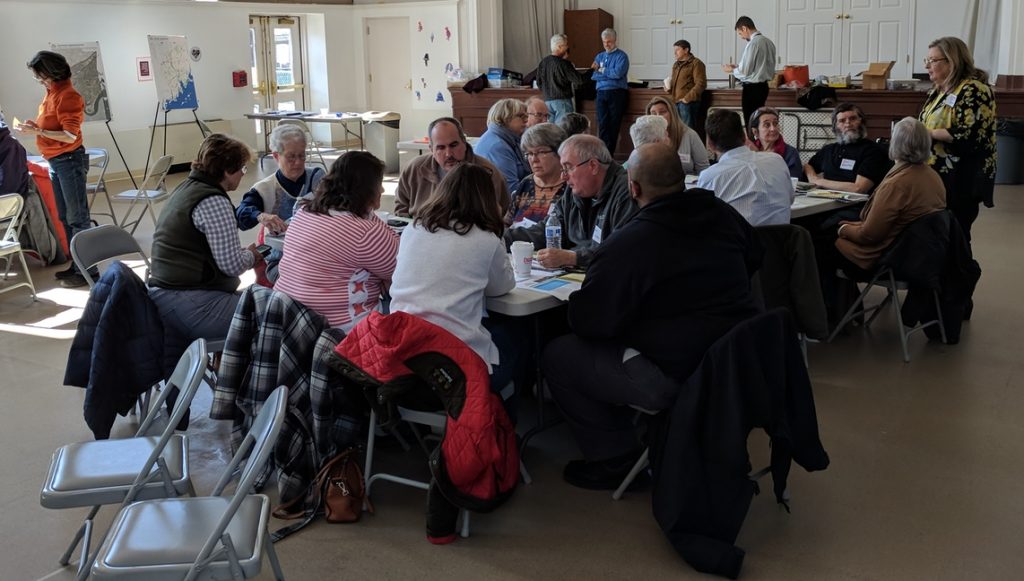 East Norwalk: Meeting participants value Calf Pasture Beach and other parks, the neighborhood feel and village scale, and walkability in their neighborhood. Things they’d like to see change or improve include poor sidewalk conditions, safer bicycle routes, more local retail/commercial services, and strategies to address flooding.
East Norwalk: Meeting participants value Calf Pasture Beach and other parks, the neighborhood feel and village scale, and walkability in their neighborhood. Things they’d like to see change or improve include poor sidewalk conditions, safer bicycle routes, more local retail/commercial services, and strategies to address flooding.- Cranbury/West Rocks: Preserving Cranbury Park and the extensive tree canopy were two natural features highlighted by participants, along with amenities like the senior center and nearby shopping. They expressed a need for a fire station and a desire to limit big box retailers on Main Avenue.
- The Green/Downtown: Many meeting participants shared favorites including the Harbor Loop trail, Wall Street area, Garden Cinema, the Green, the library, and the area’s historic character. They also identified challenges and things they would like to see change, such as the stalled POKO project, blight/vacancies in the area, and lack of parking near Wall Street.
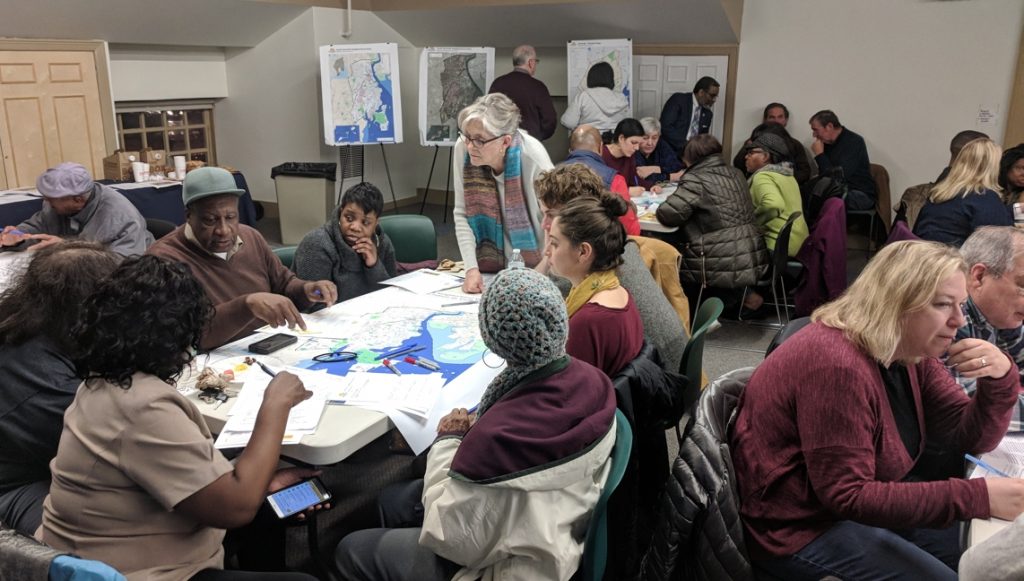 Hospital Hill/Spring Hill: The small group at this meeting discussed Riverside Cemetery as an attractive natural setting, and access to emergency services as a benefit. They identified a need for parks and open spaces in the neighborhood to provide community gathering spaces. A lack of sidewalks, poorly maintained sidewalks, and traffic accidents on Connecticut Avenue/Van Buren Avenue were also cited as areas for improvement.
Hospital Hill/Spring Hill: The small group at this meeting discussed Riverside Cemetery as an attractive natural setting, and access to emergency services as a benefit. They identified a need for parks and open spaces in the neighborhood to provide community gathering spaces. A lack of sidewalks, poorly maintained sidewalks, and traffic accidents on Connecticut Avenue/Van Buren Avenue were also cited as areas for improvement.- South Norwalk: Meeting participants highlighted arts and culture, diversity, and the waterfront as important neighborhood features. Frequent flooding on Water Street was cited by many as something to fix. Other challenges include poor street and sidewalk conditions, lack of safe biking routes, concerns about new development and traffic, and need for more jobs for all residents.
- West Norwalk: The public trails at Dolce Norwalk and Oak Hills Golf Course were two natural features highlighted by meeting attendees, as well as the neighborhood character and feel. The lack of public water and sewer was mentioned by several attendees as well as preserving and adding open space.
Shared ideas across neighborhoods
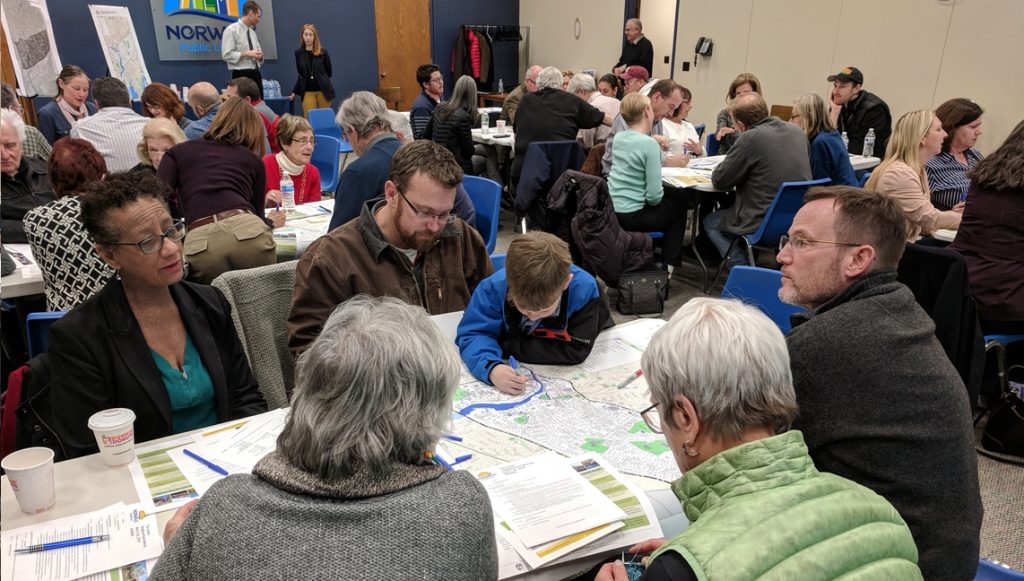 After completing these meetings, it also became clear that residents of each neighborhood shared certain ideas that are important citywide themes:
After completing these meetings, it also became clear that residents of each neighborhood shared certain ideas that are important citywide themes:
- Parks, open spaces, waterfront/beaches: Many meeting participants identified the natural setting and public open spaces as important assets throughout the city. Most highlighted existing parks and open spaces to preserve and improve. Some expressed a need for more parks and open spaces, especially in neighborhoods like Hospital Hill/Spring Hill.
- Sense of community/neighborhood feel: While intangible and difficult to precisely define, numerous meeting participants wrote that the sense of community or neighborhood feel was important to them.
- Traffic, parking, speeding: Parking on the side of two-lane roads, speeding, and traffic concerns at busy intersections were frequently cited issues. School pick-up/drop-off, cut-through traffic, and congestion related to construction or new development were often identified as potential causes.
- Need for sidewalks and bike lanes, better maintenance: Many meeting participants said they enjoy walking in their neighborhoods, or would like to feel comfortable walking more. Better maintenance of existing sidewalks and identifying opportunities for new or extended sidewalks was a top priority for many people.
Coming up next
The maps that small groups used to identify specific places to preserve or improve, individual worksheets, and the table consensus forms are being compiled into a neighborhood meeting summary memo. The results will be used to inform draft goals and strategies for the POCD to be shared with the public in the coming months.
The City and consultant team are preparing for citywide, topic-based workshops that will be scheduled in May. The four topics will be confirmed with the Oversight Committee, but current recommendations are:
- Green and Blue Norwalk: Open space and parks, harbor and coastal management, climate change adaptation, and resource-efficiency
- Complete and Connected Norwalk: Multi-modal transportation and land use (focused on pedestrians and bikes, but also cars, trains, and trails)
- Prosperous Norwalk: Retaining and attracting high-quality businesses and jobs
- Great Design for Norwalk: Community and neighborhood character, design standards for commercial and mixed-use corridors
The draft plan will be created over the summer, with public open houses scheduled in early fall for public review and input. After revisions, the formal public hearing and adoption process will take place this fall. Stay tuned for more information!




